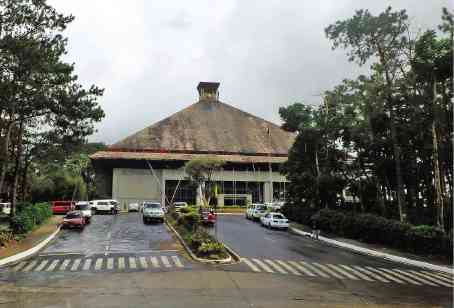Hunt for Yamashita treasure in Baguio on

DIG SITE The Baguio Convention Center compound will soon host a treasure hunting site with the approval of the Baguio City council. The project aims to recover treasure buried allegedly by Japanese soldiers. —ROLAND RABANG/CONTRIBUTOR
BAGUIO CITY—Despite an ordinance prohibiting treasure hunting here, the city council has allowed a group to try and prove the existence of the fabled Yamashita treasure which many people consider to be a myth.
On Monday, the council granted a group represented by Eliseo Cabusao an exemption from the city’s environment code, which prohibits all treasure hunting activities in the city.
Cabusao, a Baguio resident, appealed for the exemption last year, after he secured a treasure hunting permit from the National Museum of the Philippines (NMP).
The permit would allow Cabusao to first drill 10-centimeter wide holes in six key areas near the Baguio Convention Center (BCC) in front of the University of the Philippines Baguio campus.
“We expect [the treasure hunter] to complete the exploration within two days to confirm signs of metal beneath [the parking area of BCC]. If the findings turn out to be positive, [Cabusao] has to secure local permits to excavate, retrieve the treasure and restore the area to its original state,” said Councilor Edgar Avila.
Article continues after this advertisementThe council gave Cabusao 60 days to accomplish this task, he said.
Article continues after this advertisementAn oversight team from the city government would monitor the operations. An NMP representative would be present should Cabusao’s group report that the treasure had been located.
Avila said the council decision was not an indication that its members believed in the existence of the treasure that was taken by Gen. Tomoyuki Yamashita and the Imperial Japanese Army when they invaded countries in Southeast Asia.
“What if we say no, and the treasure exists? It would be better to find out. If the treasure is found, the national government gets a 35-percent share, the city government gets a 35-percent share, leaving the remaining 30 percent to the treasure hunters who discovered it,” he said.
Cabusao told the council that the project was conceived after he was informed by a 90-year-old United States immigrant about truckloads of gold he allegedly helped bury near the BCC lot.
The man of Japanese descent, who was born in Baguio, was in his teens when he and several others were ordered to hide the treasure, Cabusao said.
Most tales about the Yamashita treasure are set in Baguio, where the Japanese general set up his headquarters and where he formally surrendered, ending the Pacific leg of World War II in 1945.
The stories continue to be told, largely due to a 1988 lawsuit won by the family of the late treasure hunter Rogelio Roxas.
Roxas had claimed that soldiers beat him up and terrorized his family in 1971 before they fled with gold bars, gems, old coins and a golden Buddha which he unearthed from a tunnel near a hospital in the city. —VINCENT CABREZA